[This terrarium how-to was originally written a for the C&B Daily blog. Clover and Bee was a fantastic wedding website dedicated to the Midwest, and is sadly defunct. I have reposted the tutorial here.]
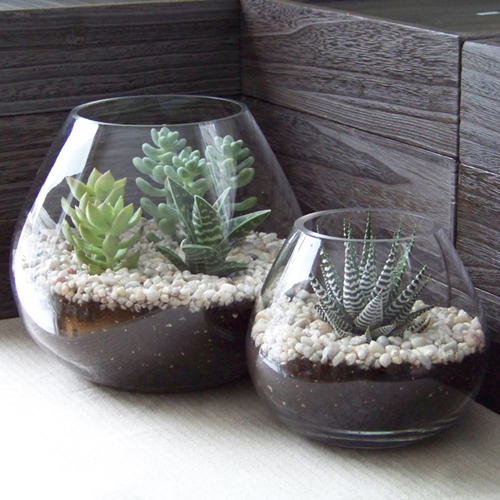
Terrariums are a great gardening project to shake those Midwest winter blues. A terrarium could add the finishing touch to your coffee table, some low-maintenance greenery to your desk, or would even make sweet centerpieces for your wedding!
Here’s what you’ll need:
A clear glass vase – open containers work well for succulents Decorative pebbles, pea gravel, or aquarium rocks Horticultural charcoal Cactus & Succulent soil mix Succulents A spoon
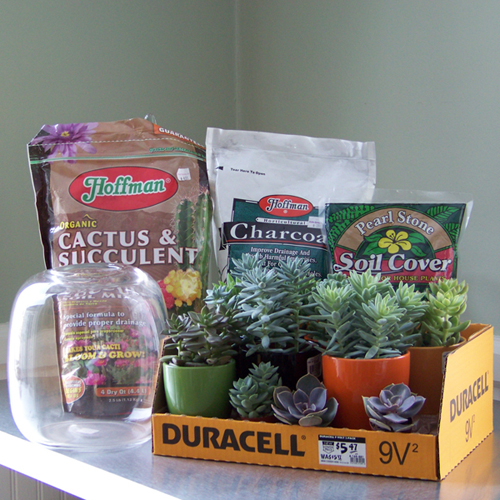
Start with a clean vase. Add a layer of pebbles about an inch thick and smooth the layer out. This layer provides drainage so the plant roots won’t rot in water.
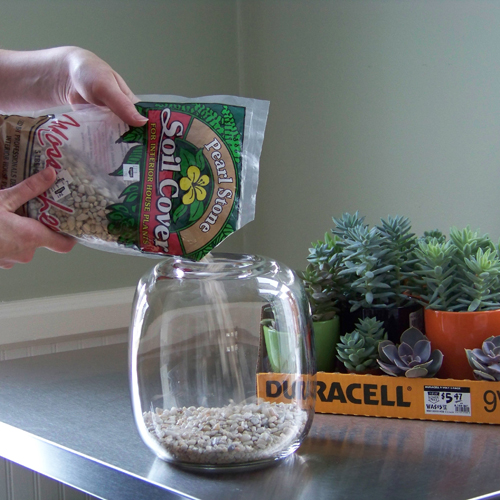
Then add a half inch of horticultural charcoal. The charcoal will help keep the terrarium smelling fresh. Smooth out this layer too. (I found that it helped to rinse the charcoal before I used it to prevent a layer of black dust from collecting on the inside of the vase.)
Next add an inch or two of cactus & succulent soil mix. You want the soil to be dry so it doesn’t stick to the sides of the vase while you work.
Using the spoon, scoop out a hole for your first plant. If you have multiple succulents in one pot, don’t be afraid to break them apart and use them separately. Make sure to inspect your plants for any diseased leaves and remove them before planting.
Plant the succulent in the hole and then pack the soil firmly around the base of the plant. Repeat until your terrarium is full.
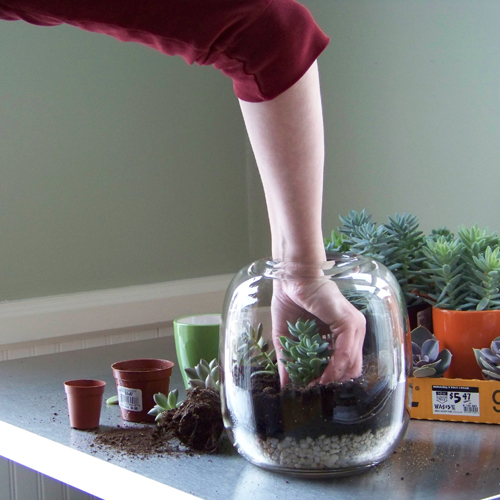
Smooth out the soil around the base of all the plants. Then give your terrarium a finished look by adding a thin layer of pebbles on top of the soil. This layer will prevent the soil from being disturbed when you water your terrarium.
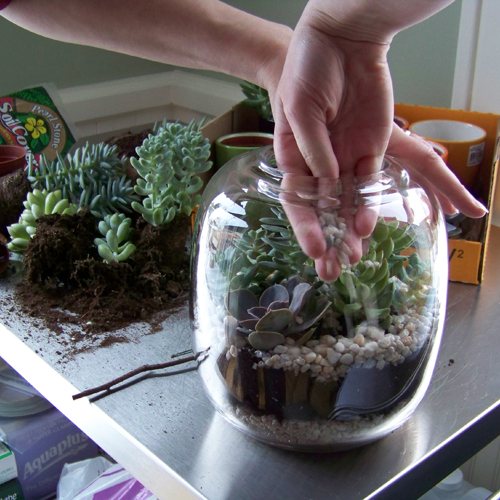
To maintain your terrarium, keep it in bright indirect light. The glass jar will amplify the effects of the sun and could end up baking your plants if you leave it in full sun!
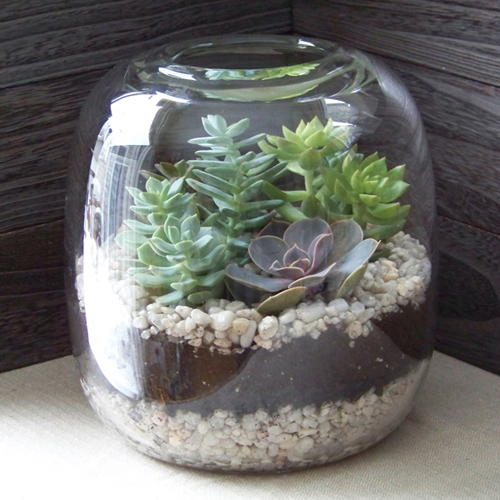
Remember, terrariums thrive on neglect. Water your terrarium every week with a shot glass or two of water. Make sure to err on the side of under watering. The last thing you want to do is drown your new succulents!
Enjoy!
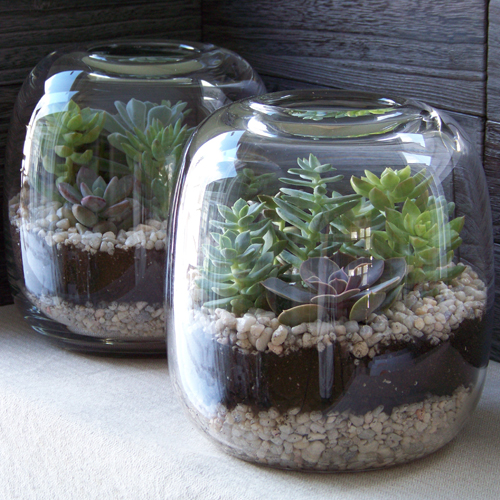

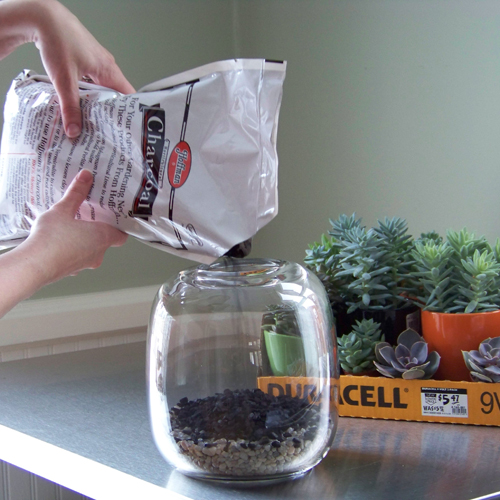
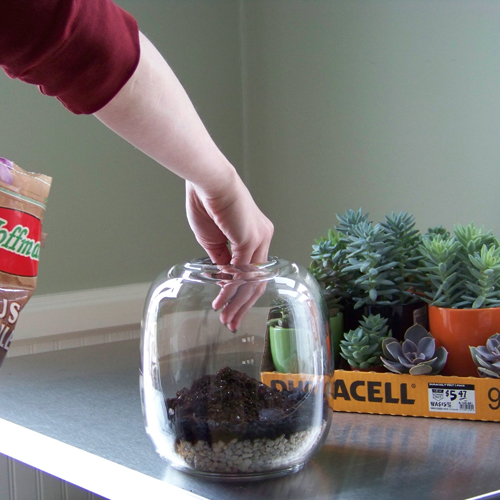
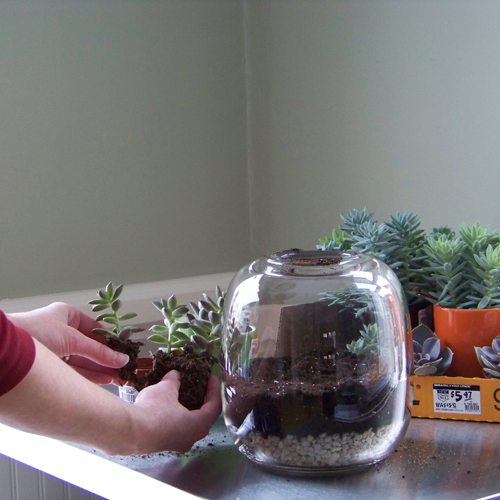
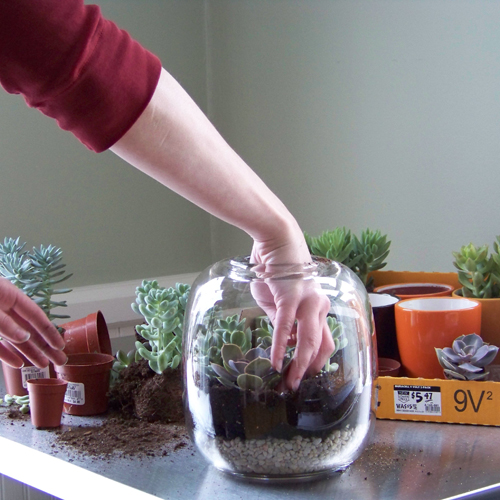
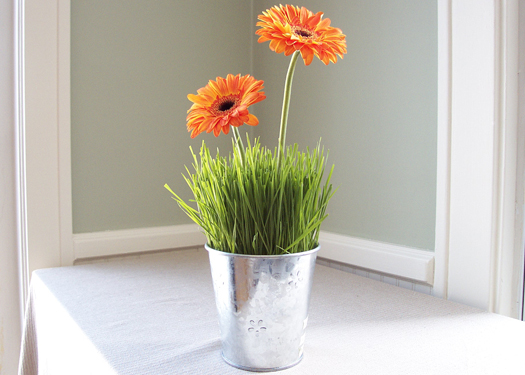 I mentioned wheat grass centerpieces in an earlier post about saving money on centerpieces. I've noticed a lot of people searching for more information, so I thought I would share my experience with growing wheatgrass to you.
I mentioned wheat grass centerpieces in an earlier post about saving money on centerpieces. I've noticed a lot of people searching for more information, so I thought I would share my experience with growing wheatgrass to you.